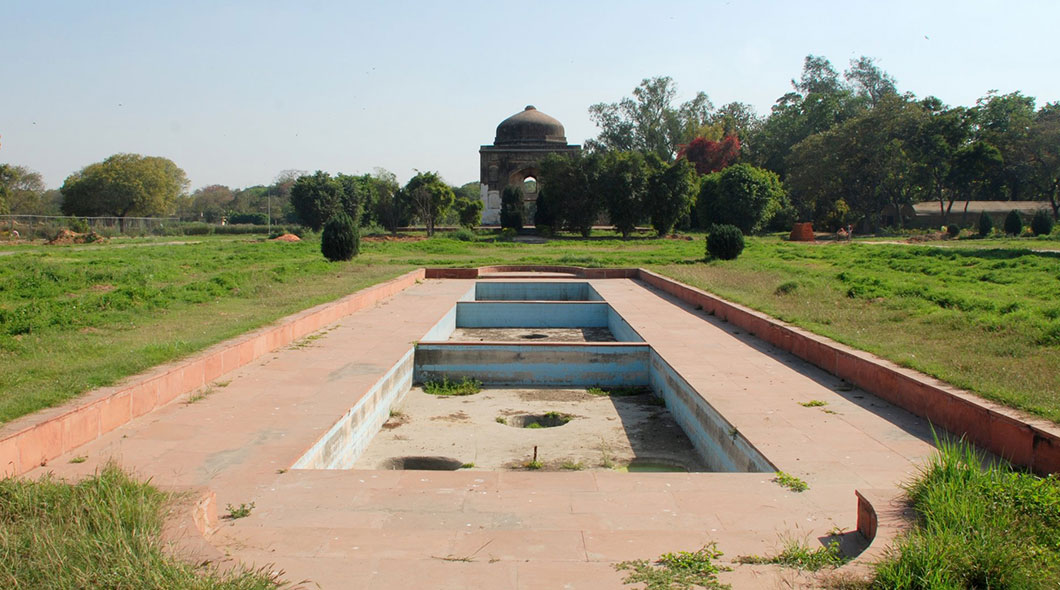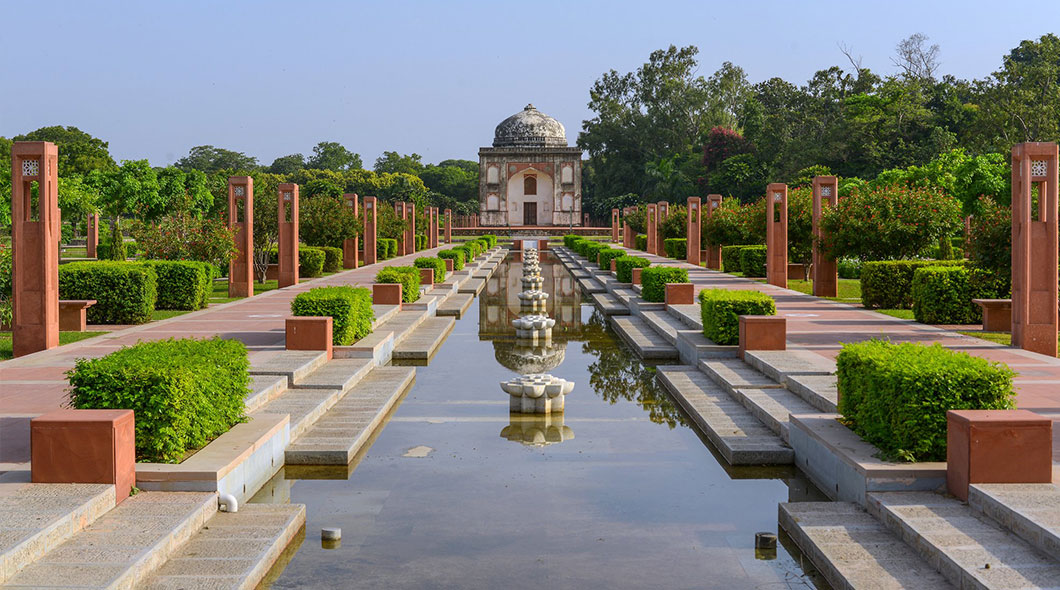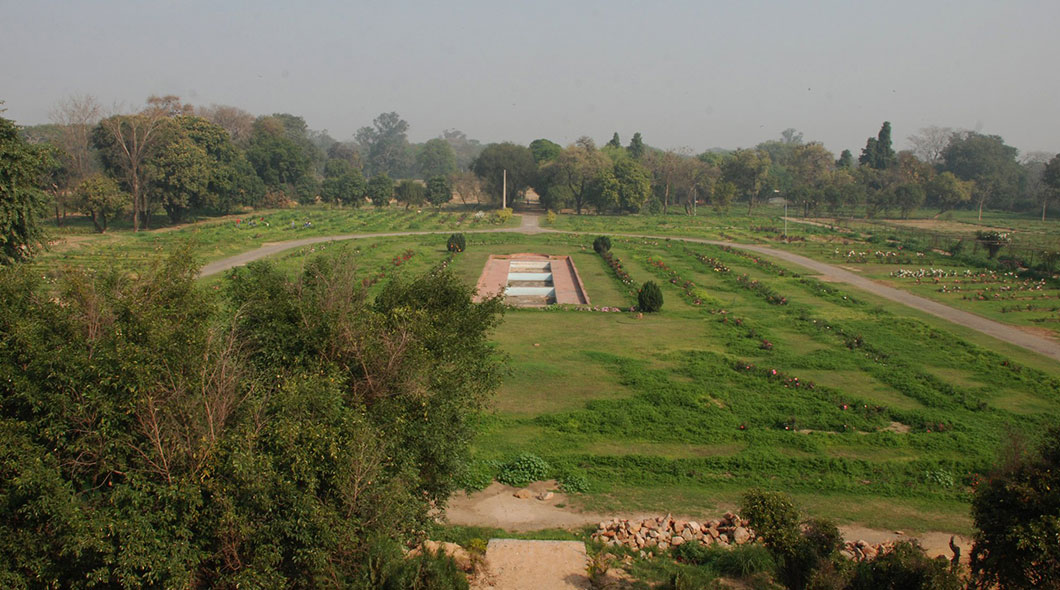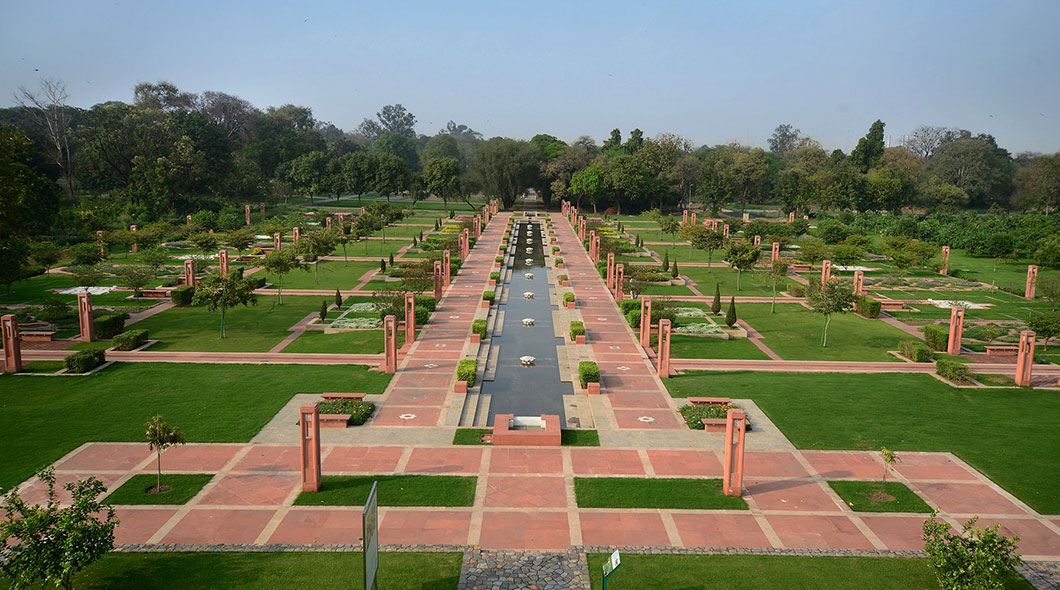-
0Acres of Nursery landscaped
-
0Mughal-era Monuments Restored
-
0Specialized Garden Created
Creating green spaces in urban areas constitutes a significant improvement in the quality of the environment and people’s living conditions. They are leisure spaces and meeting places for all ages and all social categories, encouraging different sectors of the population to mix and integrate. And they have proved to be catalysts for economic activity and a source of employment, both directly and indirectly, particularly through the services provided for visitors.
- His Highness the Aga Khan
See where we workSunder Nursery, earlier known as Azim Bagh (great garden) in Mughal times, was established in the 20th century to propagate plants for the New Delhi. It is located at the southern edge of Lutyens’ New Delhi, in the heart of the city of Delhi, and occupies an area of 25.66 Ha. Situated immediately to the north-west of Humayun’s Tomb World Heritage Site, and about half a kilometre east of the dargah of the renowned 13th century Sufi saint Hazrat Nizamuddin Auliya, Sunder Nursery too is a host to many Mughal period monuments. Spread over 90 acres, less than 10 percent of what is now Sunder Nursery was utilized as an active nursery at the onset of this Urban Renewal project. In close consultation with the CPWD, a masterplan for the area was prepared in 2008 to strengthen nursery functions and blend it’s heritage, landscape and ecological assets into a veritable combination of cultural offerings.
Sunder Nursery, known as Azim Bagh in Mughal times, was established in the early 20th century when the Imperial Delhi complex was being planned and constructed. It was here that trees and plants for the new British Capital were propagated and also testing of species brought from other parts of India and from overseas.
One of the key components of Nizamuddin Urban Renewal Initiative is environment development and restoring the historic urban landscapes. To fulfil this purpose, the landscape Master Plan for environment development of Sunder Nursery was prepared by Shaheer Associates in close consultation with the CPWD – AKTC project team, which received formal ASI, MCD, DUAC and CPWD approval in January 2009 following which civil works could begin.
The landscape master plan aims to create a major landscape space of truly urban scale, deriving inspiration from the traditional Indian concept of congruency between nature, garden and utility coupled with environmental conservation. The masterplan has three components: Developing healthier and better nurseries; developing formal and sensitive landsacapes around the 16th century Mughal-era monuments which are now part of the Humayun’s Tomb World Heritage Site; and developing Biodiversity Zones, where native plant species of Dehi region have been planted, bird and butterfly zones created, amongst others.
Sunder Nursery is located at the southern edge of Lutyens’ New Delhi, in the heart of the city of Delhi. It occupies an area of 25.66 Ha. Immediately to the north-west of Humayun’s Tomb World Heritage Site, and about half a kilometre east of the dargah of the renowned 13th century sufi saint Hazrat Nizamuddin Aulia. It occurs at the intersection of two historic axes: one aligned north-wards to the Red Fort itself, by way of Purana Qila and Ferozshah Kotla, the southern extent defined by the tomb of Abdur Rahim Khani- Khana; the other axis extends west-wards along the tree-lined Lodhi road to the picturesque late Mughal period garden enclosure of Safdarjung’s Tomb.
- Nursery Development
- Nursery
Landscape - Biodiversity and Ecology
- Heritage Conservation
- Post Project Sustainability

Sunder Nursery, together with Humayun’s Tomb, Batashewala Complex, Delhi Zoo and Purana Qila, forms a significant ecological belt along Mathura Road. The region is a rich repository of avifauna and presents a brilliant opportunity to conserve and exhibit Delhi’s biodiversity. Portions of land used for dumping construction rubble at Sunder Nursery have been converted into microhabitat zones since 2009, which aims to replicate Delhi’s depleted landscape in order to become a ‘live site’ for increased environmental awareness amongst students and visitors.
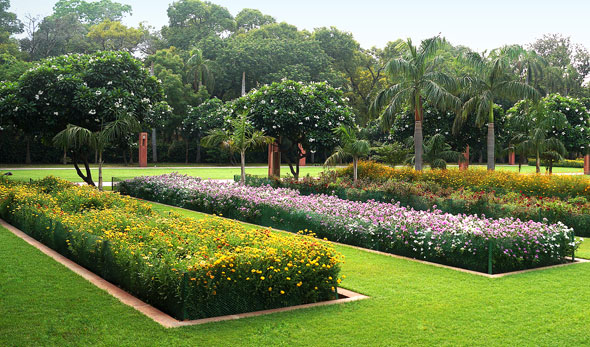
Spread over 90 acres, less than 10 percent of Sunder Nursery was utilized as an active nursery at the onset of this Urban Renewal project. In close consultation with the CPWD, a masterplan for the area was prepared in 2008 to strengthen nursery functions and blend its’s heritage, landscape and ecological assets into a veritable combination of cultural offerings. 20 acres within Sunder Nursery are dedicated to plant propagation and display of plants by the CPWD, making this the largest nursery in Central Delhi.
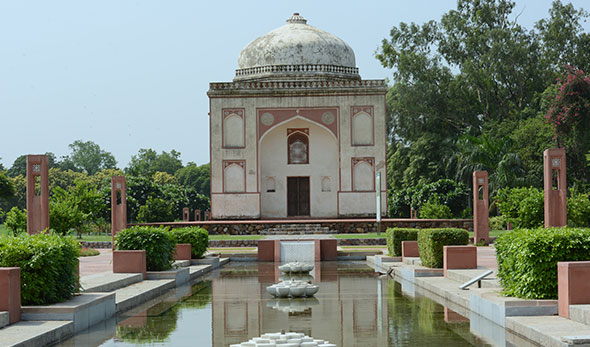
What should be the design approach to such an urban space?
Should it be conceived as another extension of the somewhat romantic ‘Picturesque’ aesthetic so widely accepted as the norm in landscape design, evocative of an English pastoral, or as an alternate, hard-edged contemporary vision, a post-modern rendering of the seemingly global aesthetic of landscapes designed as abstract art that we see in vogue now? Sunder Nursery masterplan derives inspiration from the traditional Indian concept of congruency between nature, garden and utility, coupled with environmental conservation.

Owing to its proximity to the Dargah of Hazrat Nizamuddin Auliya and Humayun’s Tomb, in Sunder Nursery stand several monuments such as the Lakkarwala Burj, Sunder Burj, Sundarwala Mahal, Mughal Garden Pavilion, Arched Platform, Lotus Pond amongst others. These are part of the historic setting of the World Heritage Site and all these structures and their garden setting are being restored. In order to enhance the historic character as well as provide a dignified setting to these striking monuments the immediate setting of these is being sensitively landscaped.
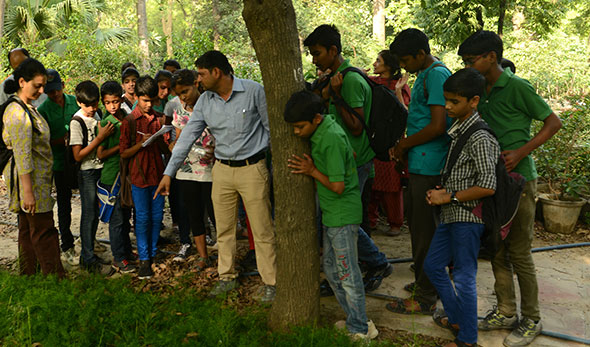
A key aspect of developments planned at Sunder Nursery is its conception as a self sustaining model. Revenue generating components like amphitheatre, eateries, convention facilities etc. have been planned to ensure upkeep of site to highest standards. To fulfil this commitment, AKTC proposed to CPWD in 2009, various options to ensure post-project sustainability. The creation of the Trust requires no land transfer and is proposed to be chaired by Secretary, MoUD while representatives of CPWD, ASI, SDMC (public parties) and AKF, AKTC (private partners) will form its core.
AKDN’s emphasis on environmental concerns and the need to create green spaces in urban areas to significantly improve the quality of the environment and people’s living conditions has led to a major undertaking of landscaping the CPWD owned, 90 acre Government Sunder Nursery as a key part of this unique project.
The experience of the Aga Khan Trust for Culture in creating large parks in the historic cities of Cairo, Kabul, Alleppo, Mali, Zanzibar, has been instrumental in planning for Sunder Nursery and working towards its future management and self sustainability.
As part of AKTC’s worldwide development strategy, market research studies were carried out to evaluate the feasibility of post project management and maintenance of Sunder Nursery and project its potential increase in revenue generation to ensure financial sustainability of the redevelopment project.
Click here to read about the Sunder Nursery ReportThe 70-acre Sunder Nursery is being landscaped to become “a major landscape space of truly urban scale, deriving inspiration from the traditional Indian concept of congruency—not division—between nature, garden, and utility, and environmental conservation, to provide for public recreation, functions and patterns of urban behavior characteristic of metropolitan cities, or to be even more specific, to Delhi,”7 thus commencing a major programme that will provide a major new facility for the city’s residents and visitors to Humayun’s Tomb, while securing the buffer zone of the World Heritage Site.
-
 Central Public Works Department
Central Public Works Department -
 Aga Khan Trust for Culture
Aga Khan Trust for Culture
